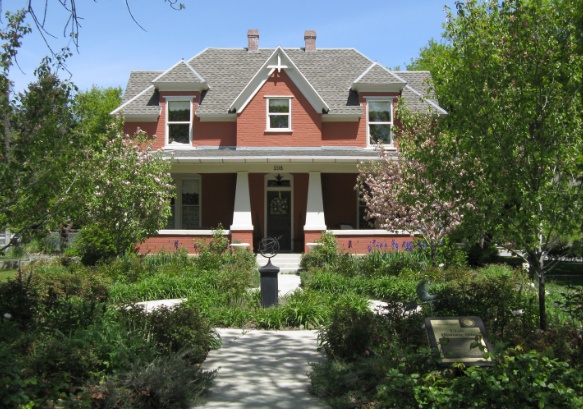
- Home
- History
- Map
- Links
Utah Division of State History National Register of Historic Places Farmington Main Street Historic District Website
- Index
Amasa Lyman and Alice Steed Clark House Annie Clark Tanner House Annie Clark Tanner Rental House Edward Franklin and Aureta Potter Clark House Eugene Henry and Sarah Anne Sessions Clark House Ezra T. Clark Monument Ezra Thompson and Mary Stevenson Clark House Ezra T. and Susan Leggett Clark House Historic Markers Hyrum Don Carlos and Eliza Porter Clark House Isaac and Lovisa Eldora Sears House John Leavitt/Timothy Baldwin and Lucy Rice Clark House Joseph Smith and Lucymaria Robinson Clark House James and Millie G. Millard House Nathan George and Esther Lauretta Ford Clark House Orson Richards and Lucile Barlow Clark House Thomas and Martha Sanders House Van and Barbara Swindle Bass House Verlene Rae Luken Fourplex Verlane Joy and August Jung House- Contact
John Leavitt/Timothy Baldwin Lucy Rice Clark House

John Leavitt/Thomothy Baldwin & Lucy Rice Clark House - 208 West State
National Register's Architecture Description "Built in three major phases; phase one: built ca. 1873 by John Leavitt; one story hall-parlor house; adobe walls, stucco finish, stone foundation, wood frame roof; original style and plan altered in subsequent years; interior window woodwork intact.
Phase two: built in 1895 by Timothy B. Clark; added two story brick central passage wing; Victorian Eclectic design with a hip roof; first phase remodeled and integrated into new construction; symmetrical facade with central bay with steep Victorian Gothic gable roof; flanked by hip roof dormers; large gable dormer on east and west sides; two-over-two double hung windows common; large windows with transoms on lower main facade; rear brick addition and porch.
Phase three: built ca. 1915; full length bungalow-type porch addition; hip roof porch with balcony supported by four flared columns resting on a raised brick and concrete pedestal."
History Timothy Clark was the second son of Ezra T. Clark and his first wife Mary. He bought this house in 1873 from John Leavitt. Timothy Clark was a farmer, an inventor and a merchant.
Timothy was a merchant and owner of his own retail coal business in Farmington for many years. Much of his business was on credit and the collections became distasteful to him so he started a salt business. He packaged and sold coarse salt that he collected in evaporating ponds he built on the Salt Lake Shore. He also raised bees and sold honey, and on the side he made vinegar from honey-sweetened water.
Timothy was a inventor of sorts, but never had his ideas patented. In his youth, the business on the farm was raising hay and to make the work go faster, he invented a horse-drawn hay rake. As an adult, he designed heating and ventilating devices for public buildings. These devices eventually were patented by others.
Timothy Clark built and operated a knitting machine in his home. Timothy and Lucy Clark knitted and sold socks to Zions Cooperative Mechantile Institution (Z.C.M.I). The Bamberger Railroad station was next door and convenient for sending socks to Salt Lake City.


- Index